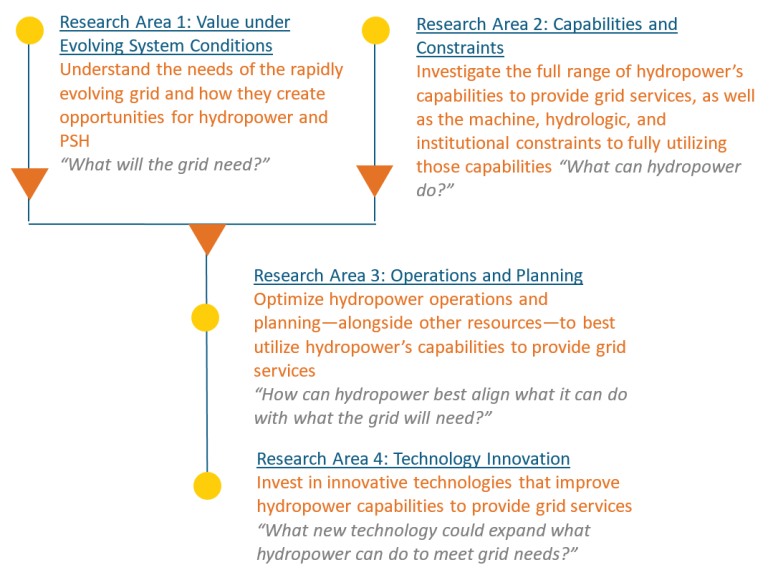Hydropower Initiatives
WORKING TOGETHER FOR THE FUTURE OF HYDROPOWER

Across Idaho and the West, hydropower is harnessed every day as a source of clean, inexpensive and resilient power. Growing hydropower in the United States and around the world will allow greater integration of renewable power sources into our power grids and increase power security and resilience in our communities. The world is excited about hydropower. INL partners with many organizations and government projects to support the development of the next generation of hydropower.
For example, INL plays a key role in supporting the HydroWIRES Initiative led by the U.S. Department of Energy’s Water Power Technologies Office. The mission of HydroWIRES is to understand and improve hydropower and pumped storage hydropower’s contributions to reliability, resilience and integration in an evolving electricity system. As that system undergoes rapid changes, America’s hydropower plants are well-positioned to take on a new role as an integrator and enabler of other resources.
This new role is characterized by additional value streams, enhanced flexibility, new operational strategies and innovative technology solutions. INL, together with four other DOE national laboratories, supports development of modeling, analysis, tools and targeted technology R&D for the benefit of the broader community.
Thomas Mosier ([email protected]), INL’s Water Power program lead, serves on the HydroWIRES committee as the research area lead for Technology Innovation, whose overarching objective is to develop solutions that enable hydropower units and plants to meet evolving grid needs.
INL’s research on integrating hydropower with energy storage exemplifies technology innovation that increases a hydropower plant’s ability to provide grid services such as frequency regulation and load following. Today’s run-of-river hydropower plants have no ability to provide these services. Reservoir-based hydropower plants can provide some of these services, yet there is often value in being able to provide additional services. A case study conducted under this project demonstrated that energy storage integration offered the potential for one utility to boost its revenue by up to 18%!

INL also conducts grid resilience research that complements the HydroWIRES portfolio. The Resilient Alaskan Distribution System Improvements using Automation, Network Analysis, Control and Energy Storage (RADIANCE) project funded under the Grid Modernization Lab Consortium program is developing self-healing, networked microgrids for the city of Cordova, Alaska, which gets most of its electricity from hydropower. A guiding objective of RADIANCE is to improve the use of existing hydropower generation to reduce diesel fuel consumption and simultaneously improve the reliability and resilience of the system. The networked microgrids make it possible for portions of Cordova’s electric system to reconfigure based on impact to specific assets. For example, if a natural disaster makes one hydropower plant inoperable, the rest of the system will reconfigure to continue serving as much load as possible.
Efforts under this initiative are organized into four interrelated research areas:



